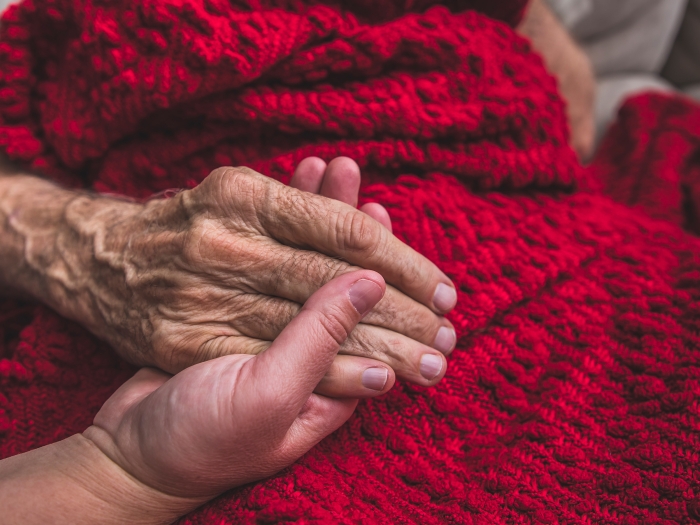Despite an increase in medical students reporting a disability, requests for testing accommodations decreased during the pandemic
Author |

Medical students who reported a disability to their school increased by more than 25% during the COVID-19 pandemic, a study shows.
The proportion of students reporting attention deficit hyperactivity disorder or chronic health and/or psychological disabilities has increased between 2015 and 2021.
Despite the increase in medical students reporting these conditions, the requests for more inclusive preclinical testing accommodations, like extra time for test completion or a less distracting environment, decreased during the pandemic between 2019 and 2021.
According to authors of the new research letter in JAMA Network Open, the remote curriculum delivery during the pandemic may have allowed students to create an optimal learning and testing environment, decreasing the need for accommodation.
“Medical education was at its most flexible during COVID,” said Lisa Meeks, Ph.D., clinical associate professor of learning health sciences and family medicine at the University of Michigan Medical School.
She adds that this could have reduced the need for testing accommodations, but it is unclear whether the need for accommodations will rise again after the recent return to in-person lectures and testing.
Documenting the rise
The study results are part of a long-term research project led by Meeks that follows the prevalence of medical students in the United States who disclose disabilities to their respective schools.
This study on disability disclosure in medicine was the first large scale study of its kind, encompassing all types of disability, including psychological, learning, sensory, physical and chronic health conditions.
Since 2015, researchers have seen an increase of medical students reporting a disability to their institution from 2.8% in 2015 to 4.7% in 2019, and to 5.9% in 2021.
When asked to describe why we see such large increases in the population of medical students with disabilities, Meeks posited that “growth in this population could mean that we are reducing bias and stigma, and therefore people who were already in medicine are more willing to disclose.”
“It could also mean that our research sparked a conversation to change policies, which then led to individuals with disabilities who didn’t think they could make it in medical school choosing to apply to these schools.”
Doctors with disabilities improve patient care
According to Meeks, there is still significant work to be done to increase the representation of doctors with disabilities in medicine.
Only 5.9% of medical school students report a disability, but 27% of adults in the U.S. currently live with some type of disability.
As the population ages, this number is expected to increase.
“Physicians in the U.S. and many other countries report that they do not feel confident in their ability to provide equal quality of care to patients with disabilities as they provide to patients without disabilities,” said Karina Pereira-Lima, Ph.D., a research fellow in the Michigan Medicine neurology department.
“The inclusion of professionals with disabilities in medicine can greatly improve the care for patients with disabilities and the health of the population overall.”
Retaining medical trainees with disabilities
Increasing the number of physicians with disabilities requires both the recruitment and retention of medical trainees.
“Anonymous research with medical trainees with disability shows that about one in every five medical students and more than half of resident physicians do not request accommodations when they need them,” said Pereira-Lima.
The two main reasons for not requesting needed accommodation were fear of stigma or bias and lack of a clear institutional process.
“Program access, or simply having the ability to access accommodations should they need them, improves medical trainees with disabilities performance in relation to testing and patient care. It also reduces the likelihood of reporting depressive symptoms or burnout,” added Pereira-Lima.
Meeks advocated for “standardization in support for students with disabilities in medical education.”
“Medical education strives for parity and continuity between medical schools, but when it comes to disability services and reasonable accommodations, there’s no standardization whatsoever,” said Meeks.
“One school could have an incredible specialized disability support services with a qualified disability resource professional running the office, while another school does not have a specialized disability support service at all.”
‘A wave of change’
The team notes that addressing the second common barrier to attaining needed disability accommodations and fear of stigma or bias requires a continued culture shift in medicine.
“Disability is still incredibly stigmatized, and ableism is rampant in medicine and medical education. At the same time, I think the work from our lab, the Association of American Medical Colleges, the Accreditation Council for Graduate Medical Education and others in medicine started a wave of change that is extraordinarily strong,” said Meeks.
This work is bolstered by the matriculation of individuals that Meeks calls the post Americans with Disabilities Act generation into medical school.
“This generation has a lot of disability pride. They’ve had accommodations their entire lives, they know the law, they know their rights and they’re not ashamed of being disabled,” said Meeks.
Next steps
As this long term study continues, the research team plans to assess how other identities interact with the disability identity.
“People with disabilities have different racial and ethnic backgrounds, sexual orientations and socio-economic statuses. We want to learn more about how the interaction between these different identities impacts the performance and mental health of medical students with disabilities,” said Pereira-Lima.
Meeks adds that thanks to new funding from the Robert Wood Johnson Foundation the DocsWithDisabilities team is doing just that.
“We’re also developing methods to measure the efficacy of accommodations. We need to do more research on the quality of received accommodations and how easy the process was for them to receive the accommodations they needed” added Pereira-Lima.
“Investing in a culture that acknowledges disability as a valuable form of diversity will improve patient care.”
In addition to Pereira-Lima and Meeks, the Michigan research team included Melissa A. Plegue, M.A., Ben Case, M.P.H., and Rylee Betchkal, B.A. Bonnielin Swenor, Ph.D. of the John Hopkins Disability Health Research Center, and Kurt Herzer, M.D., Ph.D., M.Sc. of the John Hopkins School of Medicine.
Paper cited: “Prevalence of Disability and Use of Accommodation Among US Allopathic Medical School Students Before and During the COVID-19 Pandemic,” JAMA Network Open. DOI: 10.1001/jamanetworkopen.2023.18310

Explore a variety of health care news & stories by visiting the Health Lab home page for more articles.

Department of Communication at Michigan Medicine
Want top health & research news weekly? Sign up for Health Lab’s newsletters today!





